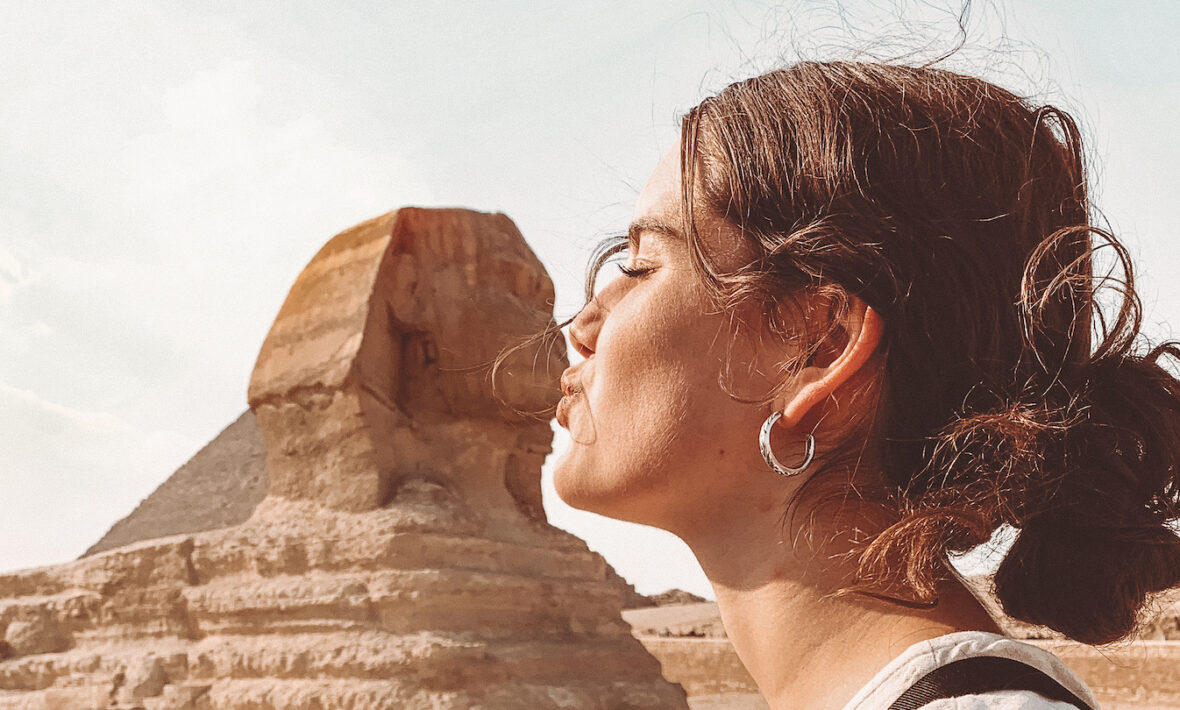Egypt is one of the most historical and fascinating countries in the world. Enjoy this 4K Scenic Relaxation Film featuring the incredible landscapes and history of Egypt. From the Pyramids of Giza to wonders of the Nile River, Egypt is a country waiting to be explored. Where is your favorite place in Egypt?




Egypt is one of the most historical and fascinating countries in the world. Enjoy this 4K Scenic Relaxation Film featuring the incredible landscapes and history of Egypt. From the Pyramids of Giza to wonders of the Nile River, Egypt is a country waiting to be explored. Where is your favorite place in Egypt?
3. Egypt is home to the longest river in Africa
It’s the Nile River, of course. The Nile has been considered by many as the longest river in the world, but the Amazon is ever-so-slightly longer – measuring a whopping 6,992km (to the Nile’s 6,650.)
4. The Statue of Liberty was originally intended for the Suez Canal
When French sculptor Frédéric-Auguste Bartholdi first had the idea to build a statue of a peasant woman, dressed in robes and holding up a massive torch, he originally wanted it to stand at the entrance of Suez canal with the name ‘Egypt Bringing Light to Asia’.
Nothing came of the project, but Bartholdi persevered with his idea, and was eventually commissioned to build the statue in New York Harbour. ‘Liberty Enlightening the World’ was unveiled in 1876, 7 years after the Suez canal was finished.
5. Cairo is the third-largest city in Africa (by population)
Love the buzz of a big city? You’ll love Cairo, Egypt’s capital city. It’s home to 10 million people, making it the highest-populated city in Africa bar two. Kinshasa (DR Congo) and Lagos (Nigeria) both have populations of more than 15 million.
6. The last Ancient Wonder of the World is in Cairo
The Great Pyramid of Khufu is the biggest of the Pyramids of Giza, and is the last ancient wonder of the world left standing.
The remaining 6 wonders of the ancient world have all been destroyed over the last few centuries. They are (or were): the Hanging Gardens of Babylon (Iraq), the Temple of Artemis (Turkey), the Statue of Zeus (Greece), the Mausoleum of Halicarnassus (Turkey), Colossus of Rhodes (Greece) and the Lighthouse of Alexandria (Egypt).
7. The largest food court in the world is in Cairo
Got a huge appetite for a huge food court? Allow me to introduce you to Oasis, Cairo’s behemoth of a food court. 25 restaurants, taking up 41,000 square metres and seating more than 4,000 diners at a time. Make sure you’re hungry!
8. Alexandria is named after Alexander the Great
Yup. A lot changed in ancient Egypt after Alexander the Great conquered the country in 331 BC. Egypt’s second city, once home to the Lighthouse which was an ancient wonder of the world, was also named after the conqueror.
9. The world’s largest embankment dam is in Egypt
True story. The controversial Aswan High Dam crosses the Nile and is part of the Egypt-Sudan border. It also creates Lake Nassar, which is one of the biggest reservoirs in the world.
10. Egypt is home to 7 UNESCO Sites
These are Abu Mena, the Necropolis of Thebes, Cairo, the Pyramids of Giza, the Nubian monuments (home to the Abu Simbel temple), the Saint Catherine Area and Whale Valley.
Some of the stone blocks used to build many of Egypt’s temples are believed to weigh more than 50 tonnes. Historians still don’t know how these were moved during ancient times.
11. The Pyramids of Giza were once bright white
To think, they used to be more impressive than they are now. Back when they were constructed (roughly 2500 BC), they were covered in a limestone casing that gave them an intense glow – especially with the Egyptian sun hitting them. Sadly this has worn off over the years, or the millenia more like.
12. The pyramids weren’t built by slaves
Experts believe that the pyramids were built by paid labourers, who travelled from far and wide to construct the pyramids. It took a total of 100,000+ people to build the great pyramids.
This isn’t to say the ancient Egyptians didn’t keep slaves. They did, but they were more likely used for domestic tasks or working in the fields.
13. Ancient Egyptians believed that makeup had healing powers
Makeup was popular with Egyptian women and men alike. They believed makeup kept them safe from the wrath of the Gods. Ancient Egyptians typically wore red makeup made of red ochre and water, or green makeup made of copper.
The ancient Egyptians were big fans of jewellery too, believing that the more they wore, the more attractive they’d be in the eyes of the Gods.
14. Ancient Egyptians invented the 12-month calendar
Next time you’re scrolling through your office calendar, just remember, you have the Egyptians to thank. The calendar invented by the ancient Egyptians was almost identical to the calendar we still use today, except each of their months was 30 days. That meant they had a 360-day year, but they made up for it by holding a 5-day festival at the end of each year (which if you ask me sounds like a neat way of doing things.)
15. Egypt borders two seas
When you visit Egypt and find yourself ready for some beachside sunbathing, you’ll be spoilt for choice. The nation boasts over 1,800 miles of coastline, divided between the Red sea to the east and the Mediterranean sea to the north. Just remember to pack sunscreen.


0 Comment